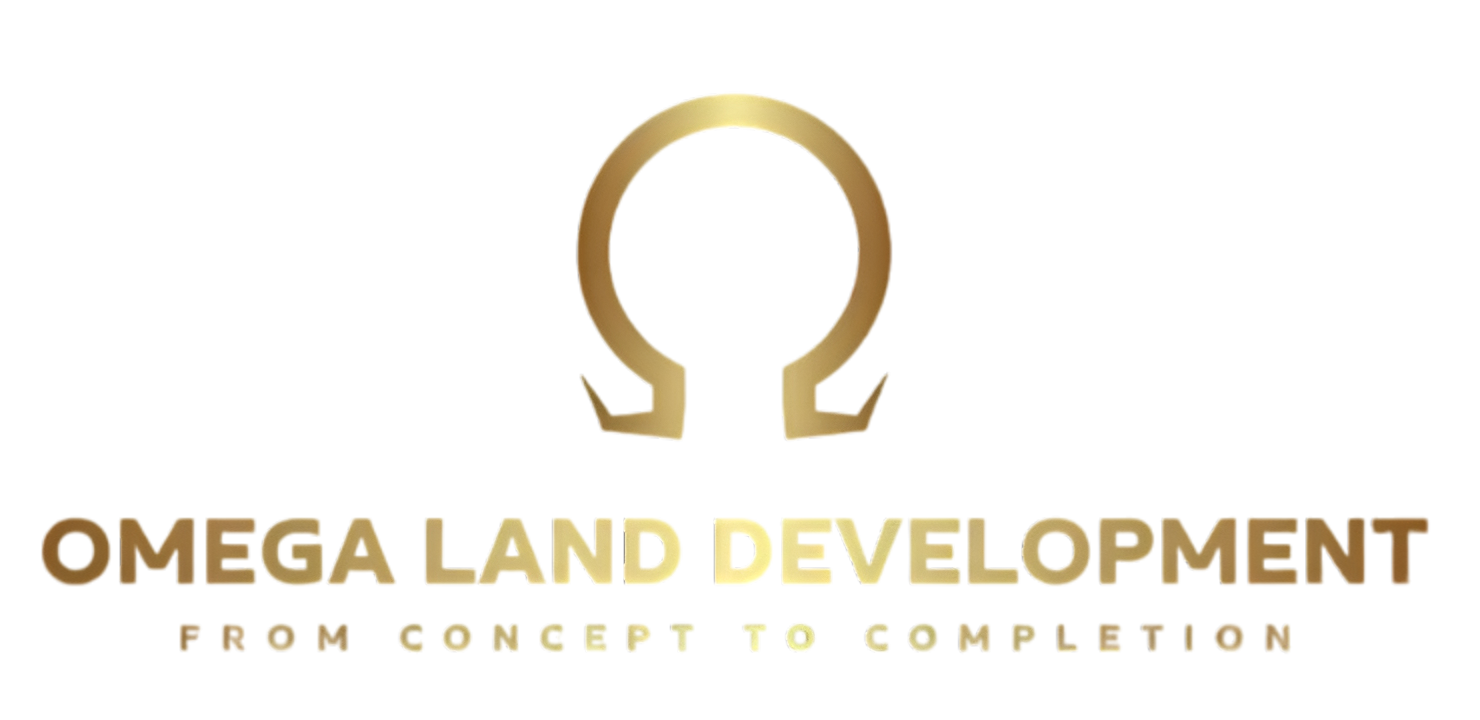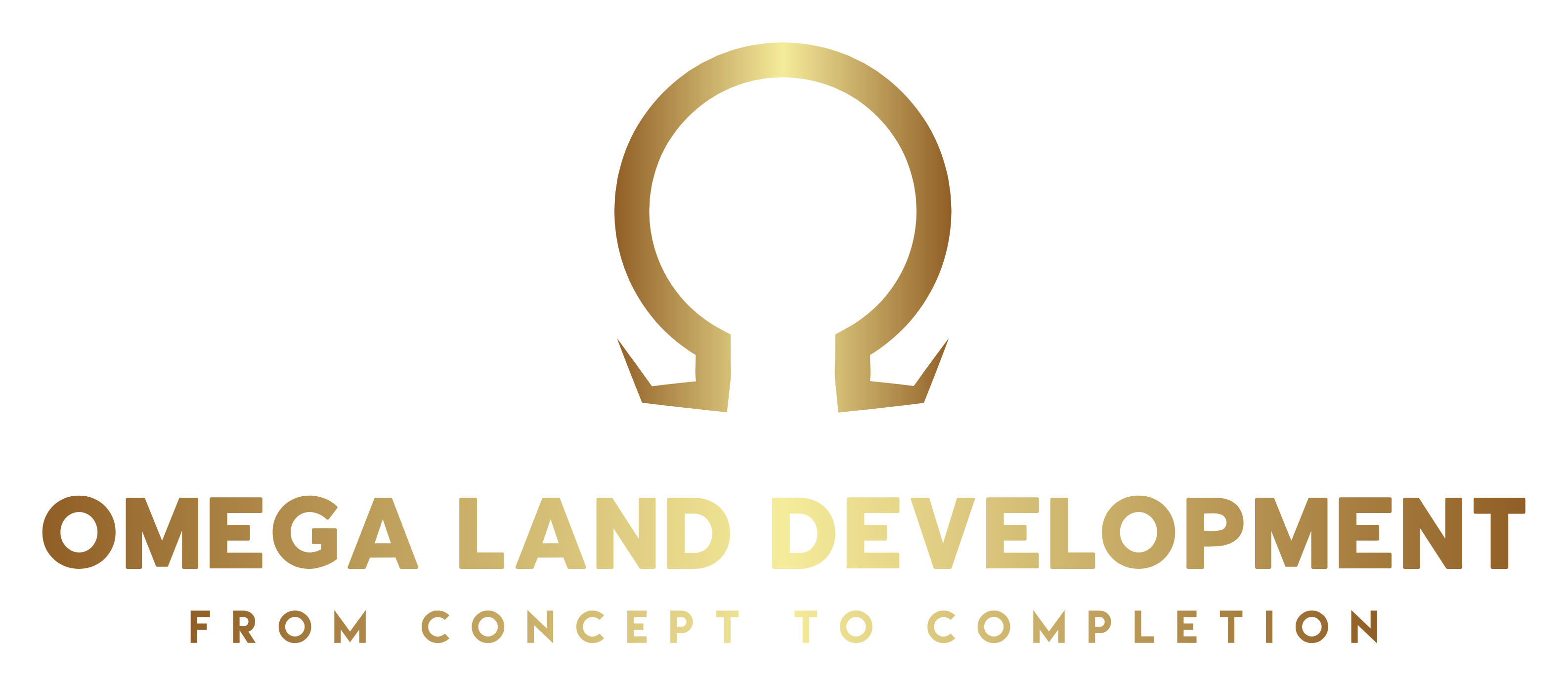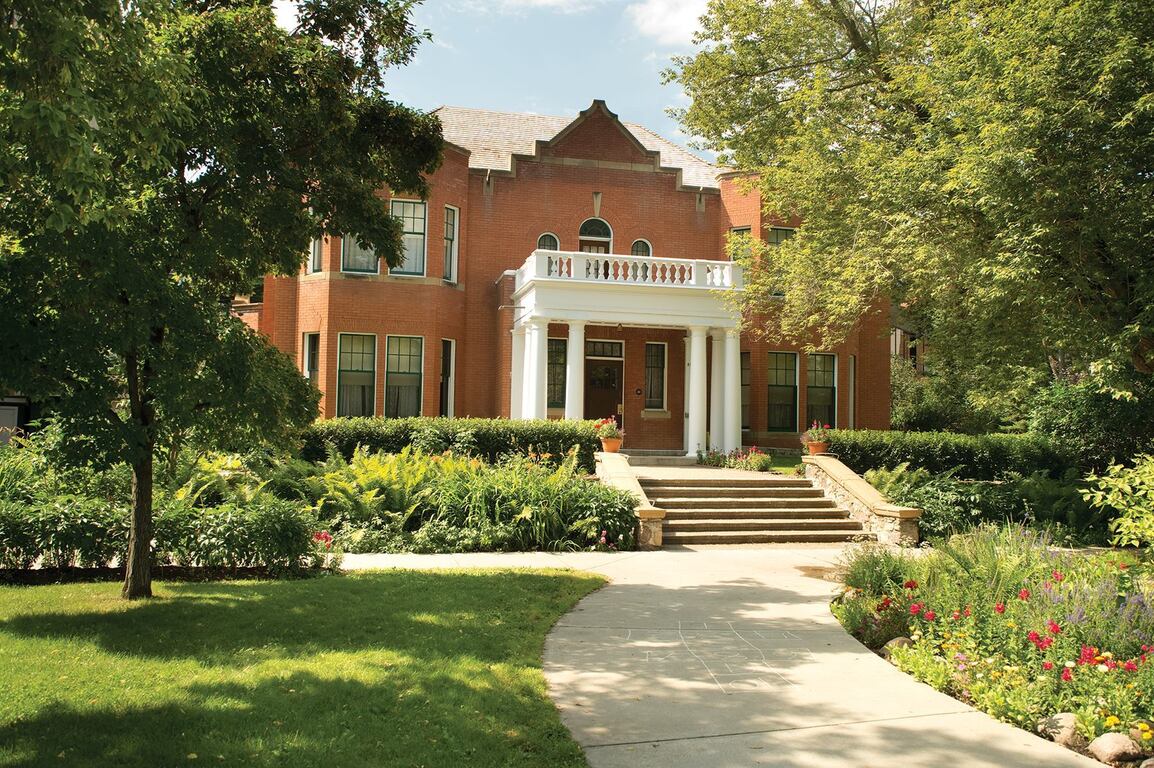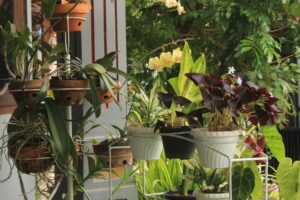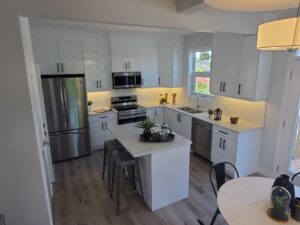Choosing between modern and traditional styles is a fun journey in personalizing your living space. In a city like Edmonton – where historic character homes stand on tree-lined streets and sleek new infill houses pop up in mature neighborhoods – homeowners and renters alike encounter a rich mix of architectural and interior design styles. This friendly guide will walk you through key differences in architecture and interior design between modern and traditional homes. We’ll also share tips on blending both looks into a transitional style, and help you decide which style suits your lifestyle, home, and personality best.
Traditional Home Architecture in Edmonton
Traditional home architecture is rooted in classic forms and time-tested construction. These homes often have an inviting, nostalgic charm – the kind you might associate with cozy fireplaces, pitched roofs, and front porches. In Edmonton’s older neighborhoods (such as Glenora, Westmount, or Old Strathcona), you’ll find many houses built in the early to mid-20th century that showcase traditional styles like Craftsman bungalows, Tudor Revivals, and Colonial Revivals (michaelpavone.com). Here are some key characteristics of traditional home exteriors:
-
Pitched Roofs & Gables: Traditional homes commonly feature pitched rooflines (gable or hip roofs) – sometimes steeply pitched with multiple gables, as seen in Tudor-style houses (blog.qualicocommunitiesedmonton.com). These steep roofs are not only classic in appearance but also practical for Edmonton’s snowy winters, easily shedding snow and ice (blog.qualicocommunitiesedmonton.com).
-
Classic Materials: You’ll often see brick, wood siding, or stone on the exterior. For example, Craftsman-style homes use natural materials like wood shingles or stone accents to blend with the landscape (blog.qualicocommunitiesedmonton.com). Many traditional Edmonton homes have brick chimneys, wooden trim, or ornamental half-timbering (in Tudor revivals) that give them a warm, handcrafted look.
-
Symmetry & Detail: Older traditional styles (like Colonial Revival) tend toward balanced, symmetrical facades with evenly spaced windows and a centered front door, sometimes framed by columns (blog.qualicocommunitiesedmonton.com). Decorative elements such as crown moldings, cornices, or arched entryways add visual interest. Unlike modern designs, these details are meant to catch the eye and convey a sense of history or formality.
-
Porches & Formal Entrances: A covered front porch is a hallmark of many traditional homes (blog.qualicocommunitiesedmonton.com). Think of a wide veranda on a Craftsman bungalow or a stately portico on a Colonial home – these features create a welcoming transition from outdoors to indoors. The front door itself might be paneled wood with glass inserts, flanked by sidelights or decorative lantern-style light fixtures.
Local examples: Walk through Edmonton’s heritage districts and you’ll likely spot these features. For instance, a stroll in Glenora reveals beautiful early-1900s houses with gabled roofs and detailed woodwork. Many original homes in that area display the Craftsman, Tudor Revival, and Colonial Revival styles that were popular in their era (michaelpavone.com). These houses often have charming details – from the scalloped shingles on a gable peak to the stone pillars on a porch – that tell a story of classic architectural design. While they may lack some modern amenities (older homes might have smaller closets or hidden kitchens), their character is undeniable.
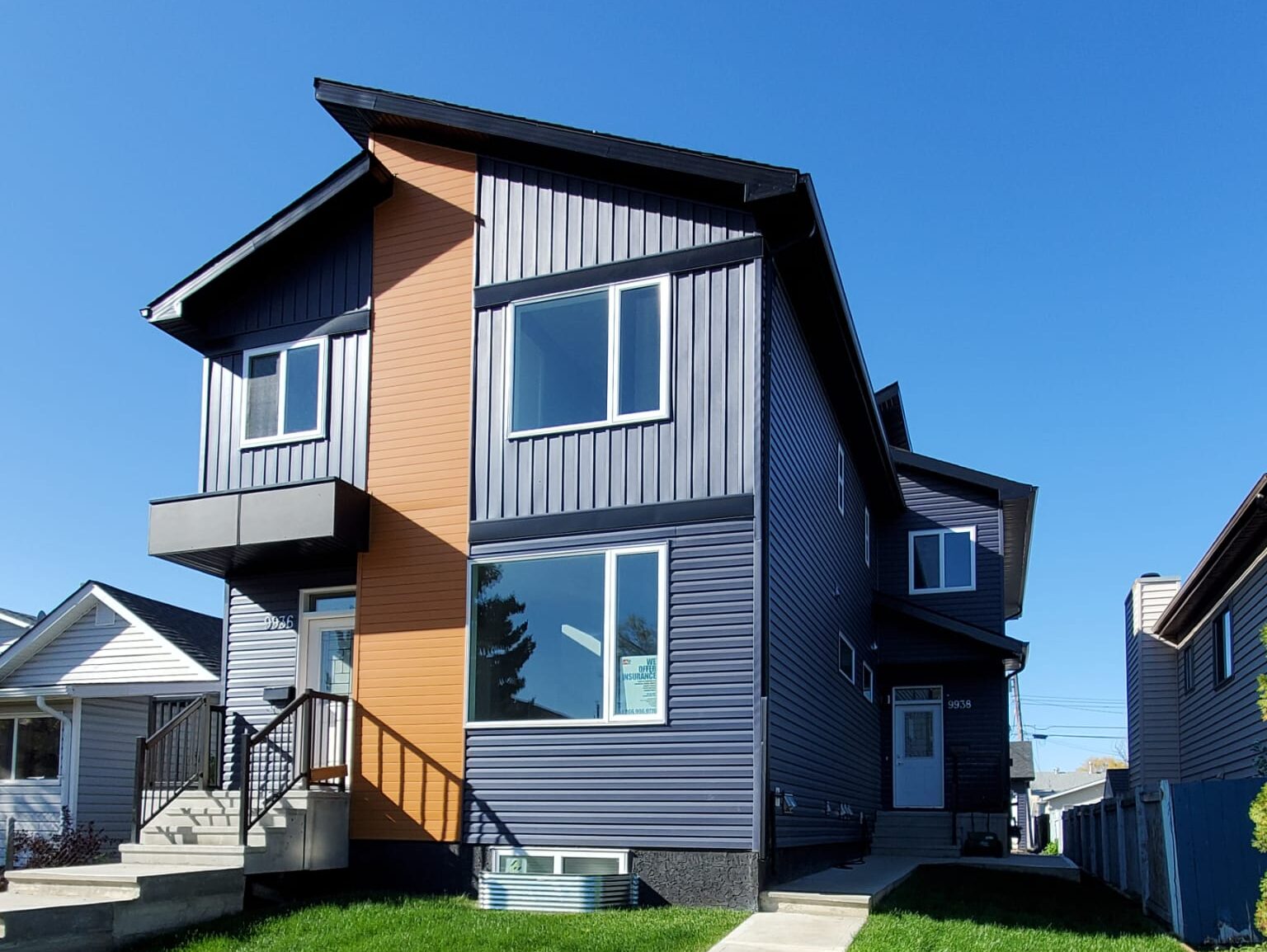
Modern Home Architecture in Edmonton
In contrast to traditional homes, modern architecture embraces simplicity and innovation. Modern homes in Edmonton began appearing in the mid-20th century (think post-war bungalows or split-levels) and continue with today’s cutting-edge contemporary builds. Whether it’s a 1960s bungalow in Jasper Place or a brand-new infill house in Grovenor, modern-style homes share some common traits:
- Clean Lines & Geometric Forms: Modern houses favor simple shapes – straight lines and geometric forms dominate the design. The overall look is uncluttered and avoids the ornate detailing of older styles (blog.qualicocommunitiesedmonton.com). You might notice boxy, rectangular silhouettes or inventive asymmetrical shapes. Roofs are often flat or low-pitched with extended eaves, giving a sleek horizontal emphasis. Even when a modern home has a pitched roof, it’s usually a simpler form (like a single shed-roof slant) rather than multiple intersecting gables.
- Extensive Use of Glass: Big windows are a signature of modern design. Rather than the smaller, multi-paned windows of traditional homes, modern architecture opts for expansive glass panes that let in lots of natural light and provide views (blog.qualicocommunitiesedmonton.com). It’s not uncommon to see floor-to-ceiling windows or entire walls of glass facing a backyard or view. In Edmonton, where daylight is precious in winter, these large windows help brighten living spaces (though good double or triple glazing boosts energy efficiency!).
- Mixed Modern Materials: Modern exteriors play with a mix of materials for texture and contrast. A single home might combine concrete, metal, stucco, and wood siding. Many contemporary Edmonton homes feature sleek stucco or fiber-cement panels alongside natural wood accents or stone cladding, creating visual interest (blog.qualicocommunitiesedmonton.com). Unlike older homes that stuck to one primary façade material, modern designs aren’t afraid to mix it up. The palette is often neutral or earthy, complementing the clean architectural lines.
- Open & Flexible Layouts: The modern ethos extends to floor plans too – interiors are typically open-concept and designed for functional living. Formal dining rooms or enclosed parlors are less common; instead, spaces flow into each other (kitchen, dining, and living areas might form one continuous great room). This openness is mirrored outside by sliding glass doors, patios, and decks that create an indoor-outdoor connection. Garages (often front-attached in suburban modern homes) and large picture windows become prominent façade elements, reflecting the home’s functions.
Local examples: Edmonton’s newer suburbs (like Windermere or Summerside) showcase plenty of modern two-story homes with contemporary elevations – tall entryways, flat-roof sections, and a mix of siding and stone. In mature central areas, modern infill homes stand out with bold, cube-like forms and cedar or metal accents, bringing a fresh look amid century-old houses. Even post-war neighborhoods show early modernist influence. Many North Edmonton communities built in the 1950s-60s feature long, low bungalows that adopted mid-century modern principles – low-pitched roofs, wide horizontal windows, wood and stucco facades, minimal ornamentation – a Prairie-influenced take on the International style (albertashistoricplaces.com). At the time, this marked a deliberate shift away from the “pretentious” details of the past, embracing a streamlined, optimistic look (albertashistoricplaces.com). Today’s modern homes continue that spirit of innovation, often “pushing the envelope” with creative designs that distinguish them from their neighbors (blog.qualicocommunitiesedmonton.com).
Traditional Interior Design Elements
If you love walking into a room and feeling like it’s filled with warmth, history, and a touch of elegance, traditional interior design might speak to you. Traditional interiors take cues from classic 18th- and 19th-century décor styles, and they create spaces that feel comfortable, rich, and timeless (interiorsbyjoan.com). Here are some defining elements of a traditional interior:
- Ornate Details & Millwork: One of the joys of traditional design is in the details. Rooms often feature beautiful woodwork like crown molding, wainscoting, decorative trim, and sometimes ceiling medallions for chandeliers (interiorsbyjoan.com). These architectural details add texture and character. Built-in cabinetry or shelves with panelled doors are common in studies or dining rooms. Fireplaces (even non-functional ones) are often treated as focal points with ornate mantels.
- Classic Furniture: Furniture in traditional settings tends toward graceful, curved lines and plush comfort. Imagine a wingback chair upholstered in a damask fabric, a tufted Chesterfield sofa, or a carved wooden coffee table with cabriole legs. These pieces have a sense of history or craftsmanship. In fact, you might incorporate antique or heirloom furniture passed down in the family – a classic oak dining table or a vintage dresser can fit right in, adding depth and story to the space (interiorsbyjoan.com). Comfort is key, so expect deep, comfortable seating with high-quality upholstery.
- Warm Color Palette: Traditional rooms often envelop you in warm, rich colors. Think deep burgundy reds, forest greens, navy blues, or golden yellows, balanced with neutral creams and taupes (interiorsbyjoan.com). Walls might be painted in a warm hue or adorned with wallpaper in elegant patterns (florals, stripes, or damask). The overall effect is cozy and inviting – the kind of room where you’d happily curl up with a book by lamplight.
- Layered Textiles & Patterns: Another hallmark of traditional interiors is layers – of fabrics, patterns, and textures. You might see heavy drapes in a luxurious fabric like silk or velvet, an oriental rug with intricate patterns on the floor, and throw pillows in assorted brocades or needlepoint. Patterns (floral prints, paisleys, tartans, toile, etc.) can be mixed, as long as the color scheme ties them together. These layers give depth and a sense of luxury or formality to the room (interiorsbyjoan.com). Don’t be afraid of a little opulence; even a small touch like a patterned area rug or a fringed throw can add to that traditional charm.
- Decorative Lighting & Accessories: In a traditional interior, lighting often doubles as decoration. Crystal chandeliers, brass table lamps with fabric shades, or wall sconces with ornate backplates are common. They cast a soft, warm light that enhances the cozy feel. You’ll also find more decorative accessories on display: framed artwork, porcelain vases, books, and family photos in vintage frames. These personal touches make the space feel lived-in and uniquely yours.
Overall, a traditional interior design creates a sense of classic elegance. It’s the style where rooms have a defined purpose (a formal dining room for hosting holiday dinners, a separate living room for receiving guests) and every object has a story. In Edmonton, many older homes come pre-loaded with traditional features like hardwood floors, moldings, and antique fixtures – leaning into those can enhance the timeless vibe. Even in a newer home, you can achieve a traditional feel by furnishing and decorating with these classic elements.
Modern Interior Design Elements
Modern interior design takes almost the opposite approach: it’s all about simplicity, openness, and functionality. If you thrive in clutter-free, airy spaces and love sleek, contemporary furnishings, the modern style might be your perfect match. Born from early- to mid-20th-century ideas (the modernist movement), this style still feels fresh and “new” today. Key elements include:
Minimalist Furniture & Layout: Modern interiors adhere to the mantra “less is more.” Rooms are typically laid out in an open floor plan to enhance flow and spaciousness (interiorsbyjoan.com). You won’t see a lot of excess furniture or knick-knacks; instead, a few high-quality, functional pieces define the space. Furniture designs are streamlined with clean lines – think low-profile sofas, simple platform beds, and tables or chairs with straight or gently curved forms. Storage is often built-in or modular to avoid clutter, creating a neat, open, unfussy impression.
Neutral Colors with Bold Accents: Modern interiors favor a neutral color base. Walls and large furniture pieces are often white, off-white, grey, or beige, creating a light and neutral backdrop (interiorsbyjoan.com). Pops of color add personality: a bold accent wall, vibrant artwork, or bright throw pillows can introduce deep blue, red, or green hues in an otherwise neutral room (interiorsbyjoan.com). The goal is a calm canvas with controlled bursts of interest.
Smooth Surfaces & Materials: Materials are used in honest, unornamented ways. Expect plenty of glass, metal, and natural wood finishes (interiorsbyjoan.com). Think glass-top tables with chrome legs, flat-front cabinets, polished concrete or light hardwood floors, and sleek stone or quartz countertops. Texture is subtle rather than ornate.
Emphasis on Light and Openness: Natural light is a prized element. Large, unadorned windows allow sunlight to flood the space (interiorsbyjoan.com). Fixtures themselves are bold yet simple – a trio of pendant lights, an abstract floor lamp, recessed ceiling lights – all highlighting the furniture’s clean lines. The brightness and airiness give modern rooms their inviting, streamlined feel (interiorsbyjoan.com).
A Less-Is-More Approach to Decor: Shelves aren’t jam-packed with trinkets; décor is intentional and functional. A single large piece of contemporary art might adorn a wall, while surfaces remain mostly clear. This sparseness lets the eye appreciate the form of the furniture and the volume of the space, creating a calm, orderly environment.
Modern interiors in Edmonton condos and homes often highlight the architecture – for example, an open-plan downtown loft with exposed concrete and ductwork practically calls for a modern minimalist décor to feel cohesive. By focusing on functional beauty (every piece has a purpose and a design role), modern style creates living spaces that feel fresh, open, and effortlessly stylish (interiorsbyjoan.com).
Blending Styles: Tips for a Cohesive Transitional Look
What if you find yourself drawn to both traditional warmth and modern simplicity? Good news – you don’t have to choose one or the other! Many Edmonton homeowners are creating transitional interiors that blend modern and traditional elements into a harmonious mix. Transitional style is essentially the “best of both worlds,” combining clean lines with classic touches (interiorsbyjoan.com). Here are some friendly tips for mixing modern and traditional in your home without things looking mismatched:
Start with a Neutral Base: If you’re aiming to blend styles, begin with a neutral foundation for your room. Walls in a soft gray, white, or beige, and floors in a natural wood tone or neutral carpet set a versatile stage. A neutral color palette is something both modern and traditional styles share, and it helps create cohesion (livingcozy.com). With calm walls and floors, you can introduce both an antique wooden sideboard and a sleek metal floor lamp without the two clashing – the backdrop ties them together.
Mix Old and New Pieces Intentionally: The key to a transitional look is balance (livingcozy.com). For every traditional element, introduce something modern (and vice versa). For example, above a vintage wood console table, you might hang a bold contemporary abstract painting – the contrast feels chic and deliberate. Or, place a streamlined modern sofa in a room that also features an ornate antique coffee table. Pairing an ornate item like a framed mirror with a simple, clean-lined piece of furniture is a classic transitional technique (livingcozy.com). It shows you appreciate history but are also in tune with the present.
Choose Transitional Furniture: You can also shop for pieces that themselves blend styles. Many makers offer “transitional” designs – a chair with a traditional silhouette in a modern neutral fabric, or a dining table with clean lines in a warm rustic wood. These bridge modern and traditional items effortlessly. A light fixture with a classic shape but matte-black finish, for instance, works in either context and helps the whole room feel intentionally mixed rather than accidentally mismatched.
Use Modern Lighting & Art for an Update: If you have a mostly traditional room that needs a refresh, swap in modern lighting or artwork. A geometric pendant or sleek floor lamp can instantly update classic furniture (livingcozy.com). Abstract art or minimalist black-and-white photography likewise makes a space feel current. Designers note that modern lighting can “cut through” any stuffy vibe and create a lovely transitional atmosphere (livingcozy.com).
Keep the Palette Consistent: When blending eras, limit your color scheme to two or three main hues and repeat them across both modern and traditional pieces. For example, a navy–white–gold palette could appear in velvet pillows on a contemporary sofa, a classic patterned rug, and gold metal accents on both a modern side table and traditional picture frames. This shared palette creates an intentional through-line that unifies different styles.
By following these tips, your home can comfortably sit at the intersection of modern and traditional – a style often called transitional. It offers flexibility and feels highly personal. Your space won’t resemble a catalog page of one style or another; instead, it will feel like you, with all the personality that entails!
How to Choose the Right Style for You
Ultimately, the decision between modern vs. traditional (or a blend of both) comes down to what makes you feel happy and at home. There’s no “right” or “wrong” style – it’s about the fit with your lifestyle, your space, and your personal aesthetic. Here are a few considerations to help you discover which home style aligns best with your needs:
-
Lifestyle & Comfort: Think about your daily life and what home environment makes you most comfortable. Do you crave a calm, clutter-free sanctuary after a busy day? If you appreciate simplicity, functionality, and an uncluttered environment, a modern design might be ideal for you (interiorsbyjoan.com).
Modern style supports a laid-back, low-maintenance lifestyle – easy-clean surfaces, few dust-collecting knick-knacks, and open spaces that let you move and multitask.
On the other hand, if you love curling up in a plush armchair surrounded by books or hosting formal holiday dinners with the good china, a traditional style may suit you better. Traditional design often appeals to those who value classic elegance and a sense of history (interiorsbyjoan.com). It creates a cozy, collected environment where you can display heirlooms and really nest. -
Home Size & Layout: Your home’s size and floor plan also influence the best style. If you live in a smaller apartment or condo with an open layout and big windows, modern décor can help it feel larger and brighter (interiorsbyjoan.com).
Conversely, a larger home with many separate rooms can lean traditional so each room develops its own cozy character. Traditional design is perfect for creating warm wood-paneled studies or sumptuous dining rooms without feeling cramped (interiorsbyjoan.com). Also think about architecture: a historic house’s ornate trim suits traditional décor, while a brand-new open-plan build may flow better with modern style. -
Personal Aesthetic: Flip through magazines or scroll local listings and note which spaces excite you. Are you drawn to cutting-edge furniture, geometric designs, and trendy color palettes? Then you probably lean modern. If vintage finds, chandeliers, and history-packed rooms make your heart sing, traditional may be for you. Some people love both – that’s where transitional style shines (interiorsbyjoan.com).
-
Blend for Personal Balance: You’re never locked into a single look. Many homeowners find their sweet spot is a mix. Start with a neutral base (livingcozy.com), balance old and new pieces (livingcozy.com), and use modern lighting or art to refresh traditional settings (livingcozy.com). Limiting the palette to a few repeating colors keeps everything cohesive and creates an intentional through-line.
Conclusion
Edmonton offers a wonderful backdrop for both modern and traditional styles. From historic Old Strathcona homes to contemporary downtown lofts, inspiration is everywhere. As you weigh rooflines, furniture, paint colors, and floor plans, pay attention to how each style resonates with you. You might fall for modern simplicity, cherish traditional charm, or land on a bit of both – whatever makes you feel comfortable, inspired, and truly at home.
